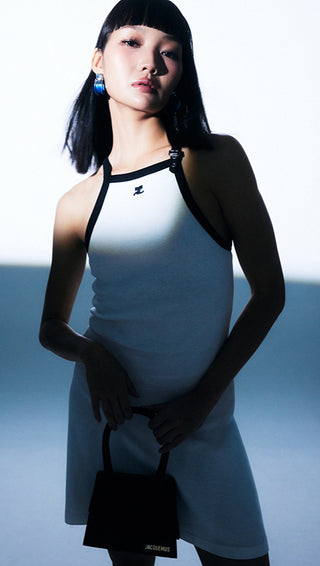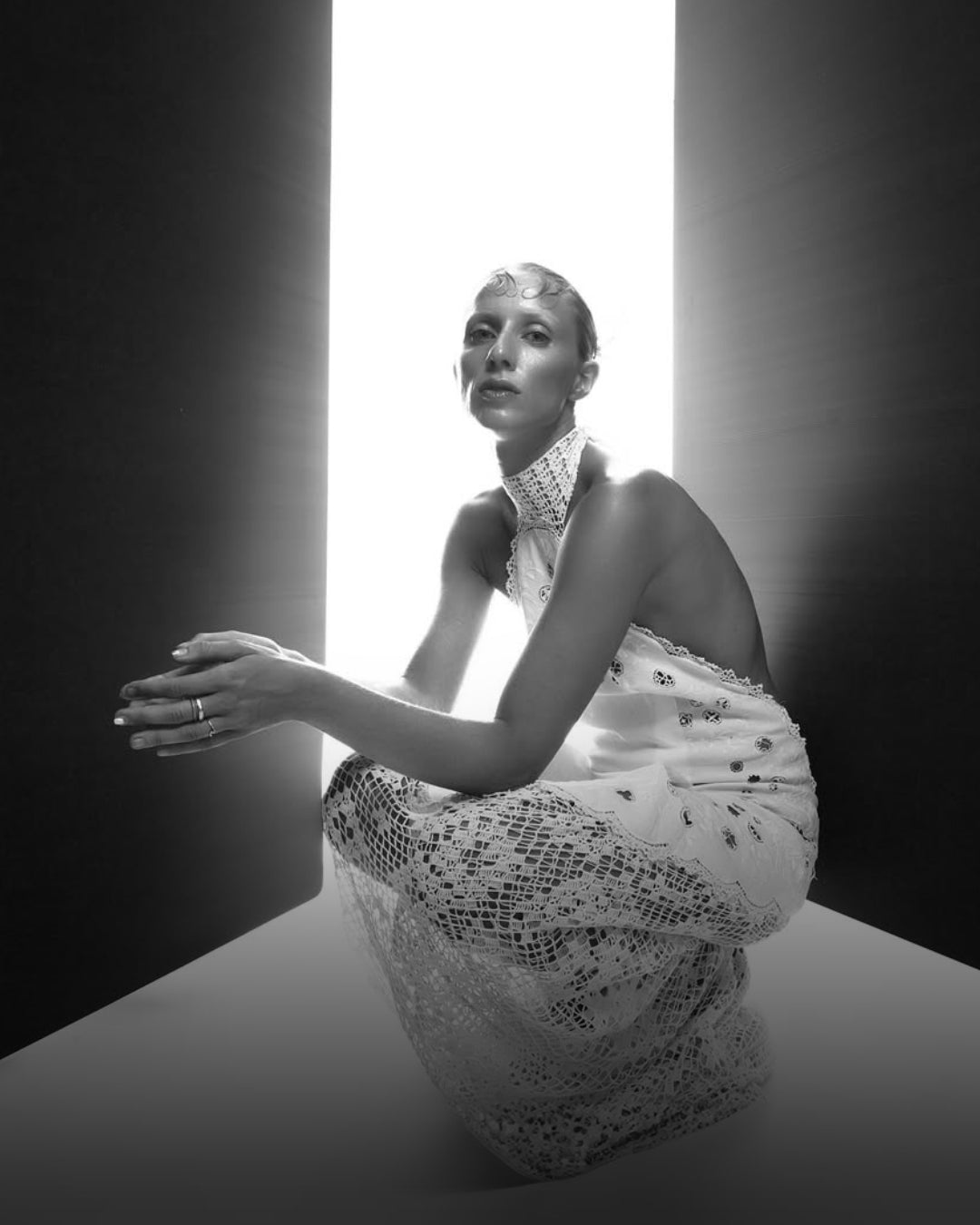
How Rosalía’s “BERGHAIN” Redefines Luxury for a New Generation
When Rosalía released “BERGHAIN”, she didn’t just drop another song; she set a tone. The Spanish artist, known for collapsing genres and rewriting rules, turned a Berlin club into a cultural metaphor for freedom, experimentation, and identity in motion. Her sound merges flamenco, techno, and pop, while her visuals blend poetry with chaos. Nothing about it feels polished for approval; it feels lived, felt, and unfiltered. That’s exactly why the fashion world pays attention.
Rosalía’s music has always carried a visual narrative, but “BERGHAIN” marks a shift. It speaks to a generation fluent in remix culture, where old and new coexist without hierarchy. In the video, she wears an Hermès top from the 1990s, vintage denim, and a structured ABRA bag, a combination that perfectly mirrors today’s evolving idea of luxury. What she’s wearing isn’t just styled; it’s curated. Every element holds story, contrast, and context.
That matters because the meaning of luxury itself is changing. The industry has spent the past few years rebuilding after economic instability, slower growth, and the reshuffling that followed the pandemic. Luxury has become less about ownership and more about connection: how a brand aligns with identity, purpose, and experience. Consumers today aren’t buying to belong; they’re buying to express.
In Rosalía’s world, that expression is bold, irreverent, and self-directed. Her mix of archive pieces and independent designers captures what modern fashion aspires to be: thoughtful, culturally aware, and fun. It shows how a woman can build a look that feels personal yet elevated, mixing vintage with new, Hermès with ABRA, and making it entirely her own. It’s clever, fashion-literate, and confident. That balance between intellect and spontaneity is what makes it resonate.
It also reflects how global luxury is moving away from formula and toward personality. Fashion is no longer a system of seasons and silhouettes, but a dialogue between cultures, economies, and generations.
The New Rules of Buying
The shift in how we consume fashion is structural. Economic uncertainty, slower growth, and digital acceleration have redefined what value means for both brands and customers. The luxury market remains resilient, but the motivations behind purchases are changing.
For Millennials, who now hold the largest share of global luxury spending, buying habits have matured. They value longevity, transparency, and quality, but they also expect a brand to earn their trust. They research before buying, compare across platforms, and invest in pieces that hold meaning beyond a single season. They are strategic consumers, building wardrobes as long-term portfolios of identity rather than impulse.
For Gen Z, luxury operates on an entirely different wavelength. They see it as cultural currency, something to interpret, remix, and recontextualize. They are the generation of archive Prada, second-hand Chanel, and one-of-one upcycled pieces discovered online. They thrift, trade, and curate. Their wardrobes blur resale with runway, vintage with emerging. For them, meaning has become the new status symbol.
In Asia, these two groups overlap to create one of the most influential audiences in global fashion. Southeast Asian shoppers, particularly in Singapore, Bangkok, and Seoul, move fluidly between digital discovery and physical retail. They want the craftsmanship of Europe, the creativity of independent labels, and the modernity of local expression. They follow drops, track currency shifts, and approach luxury as informed insiders.
What Defines an Emerging Designer
Within this new cultural and commercial landscape, the idea of an emerging designer has evolved. It’s no longer a term for beginners; it’s shorthand for independence, focus, and creative conviction. These designers are redefining how fashion operates, challenging traditional systems of scale and visibility. They design less for hype and more for harmony, balancing material and message, silhouette and substance.
They are not driven by quarterly growth or mass appeal but by refinement and endurance. Their work responds to the same global shifts shaping the luxury customer: the desire for originality, purpose, and connection. They are not reacting to trends; they often challenge them, prompting the consumer to question what fashion really stands for.
Emerging designers are also reshaping the competitive landscape. Their presence forces legacy houses to innovate and to remember risk. They inject vitality into the market by proving that small scale can coexist with big ambition. And because they are closer to their communities digitally, emotionally, and geographically, they can read culture in real time. This intimacy creates a feedback loop that the larger players often lose: design informed by life, not data.
As luxury evolves, the most interesting progress often comes from the edges, from designers who experiment with form, materials, and meaning in ways that challenge the system. Take Paloma Wool or Kettel Atelier, for instance. One explores ease and movement through art-driven design; the other studies structure, texture, and how clothes shape emotion. Both have built communities that extend beyond the product, grounded in conversation, not campaigns. Defaïence brings innovation through new materials and digital craftsmanship, transforming jewelry into sculptural forms that feel intimate rather than industrial. Justine Clenquet has turned accessories into a language of rebellion and individuality, while Marine Serre continues to test the boundaries of circular design, merging athleticism, couture, and ideology into one clear narrative.
Where fashion goes next? From Rosalía’s “BERGHAIN” to independent designers across Europe, the future of fashion is less about invention and more about interpretation. The next chapter of luxury will be written by brands that understand cultural, creative, and emotional movement.
Consumers are no longer waiting for fashion to tell them what’s next. They are shaping it themselves through how they shop, style, and share. That is where independent designers thrive, in the space between global visibility and personal meaning.





